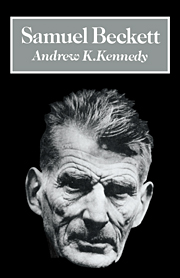10 - The Unnamable
Published online by Cambridge University Press: 23 February 2010
Summary
The third novel of the trilogy is a radical innovation, in several ways an extreme transformation of the elements of Beckett's writing known to us from the previous two novels. What is left of fictional character is finally reduced to a disembodied voice, indefinite and indefinable in terms of ordinary human identity, deprived of specific time, place, function and purpose. In so far as this voice has a quest – wavering, painful and unsustainable – it is to find an answer to the questions of its own being, on the edge of non-being, among shadowy presences in a kind of limbo. And in so far as it has an aim it is to reach a final silence through its own excess of speaking: that incessant, compulsive written soliloquy that makes up the winding text of The Unnamable. If Malone was still driven by a story-telling urge, both to escape from himself and to make discoveries about the true but dying self, the Unnamable gets tired of stories almost as soon as he starts one, and can only summon enough energy to make concrete one out of four attempted stories – that of Mahood, the torso in the jar. The other stories, the story of Worm especially, get stunted and blurred at their inception, barely distinguishable from the ‘I’ (unsure of its ‘I’) that is trying to tell its own non-story. Endless variations on that uncertain quest, in nervous, rapidly changing prose rhythms, give the text a force otherwise lacking in situation and episode.
- Type
- Chapter
- Information
- Samuel Beckett , pp. 139 - 152Publisher: Cambridge University PressPrint publication year: 1989



